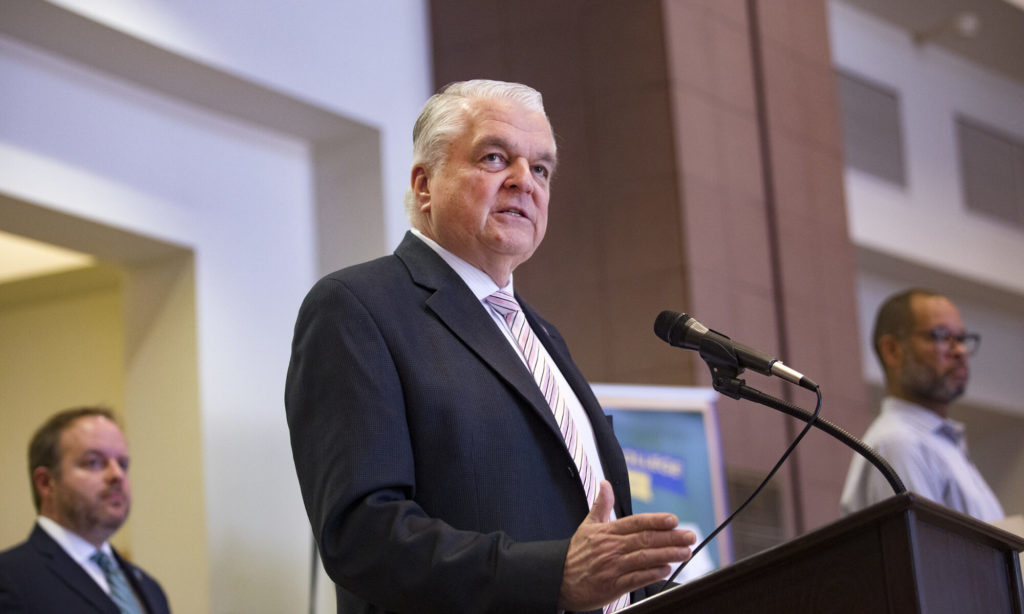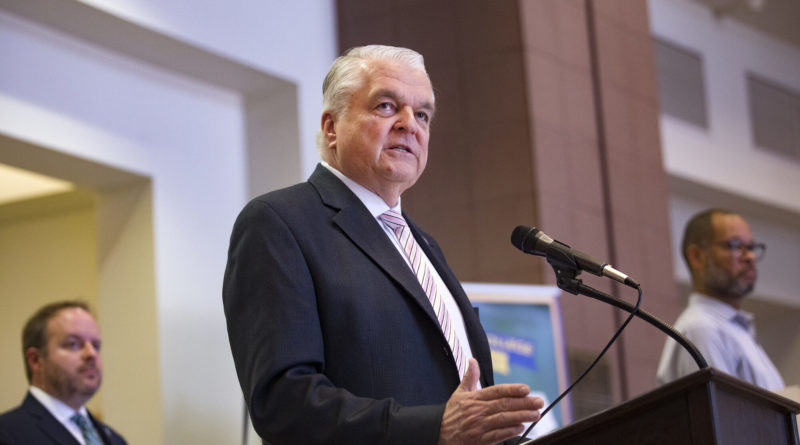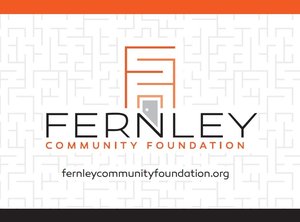Sisolak says state will transition to limited business reopening over next 15 days as worst of COVID-19 passes

By Riley Snyder and Michelle Rindels
https://thenevadaindependent.com
Gov. Steve Sisolak announced an “active transition” in the next 15 days toward reopening a moribund economy, giving the clearest guidelines yet as to how the shuttered state will take steps to emerge from the COVID-19 pandemic.
The plan, unveiled at a press conference in Carson City on Thursday, involves a shift from sweeping control of the governor to a more collaborative, county leader-centric approach, and will allow some nonessential businesses to open their doors in a limited manner for the first time since March.
The governor credited the “incredible discipline Nevadans have shown in slowing the growth of this virus” and that barring any unforeseen spike in cases or hospitalizations, the state would be able to move to a “Phase 1” reopening by or before May 15.
“This tells me the following: we’re doing good, but we still have some work to do to meet this criteria before reopening,” he said, according to prepared remarks. “I’m confident we can get there together and do it on our timeline.”
Under the Phase 1 requirements:
- Social events and public gatherings over 10 people will still be prohibited
- Some “non-essential” businesses may voluntarily reopen under restrictions and under “extremely aggressive social distancing measures”
- Stand-alone retail stores may open up, but employees and customers are encouraged to wear facial coverings
- Bars and nightclubs, malls, large sporting events, large in-person worship services and concerts will remain prohibited
- The governor’s office is considering the “gradual” reopening of dine-in restaurants and personal care services. No decision has been made on allowing reopening under a certain percentage of occupancy
- Gaming and casino establishments will not open at the start of Phase 1, and any decision on reopening will be driven by the Nevada Gaming Control Board
As part of Phase 1, the new plan transitions more authority on reopening decisions to county governments, but requires them to have guidance and restrictions that meet or exceed a baseline set by a state directive.
Sisolak, former chair of the Clark County Commission, said the hallmark of that plan is a new Local Empowerment Advisory Panel, or LEAP, that will help counties meet requirements to reopen. Members announced so far include Clark County Commission Chair Marilyn Kirkpatrick, Eureka County Commission Chair J.J. Goicoechea and representatives from business-focused state agencies.
Part of that plan is requiring counties to submit data including PPE supplies and testing and death information to the LEAP and the state so officials can monitor progress through the reopening. He said he’s willing to pause to take extra time and attention if any counties show problems.
“It would be a disservice to the residents and businesses in our State to pretend like Esmeralda County is the same as Nye County or that Clark is the same as Elko. They’re not, and that’s okay,” he said, according to prepared remarks. “It’s why our response efforts should reflect our regional differences, while still operating under our shared, statewide goal of keeping Nevadans safe and restarting our economy.”
Sisolak said the state’s criteria for reopening remained the same; a consistent and sustainable downward trajectory in COVID-19 cases and hospitalization over a 14-day period, sufficient hospital capacity and healthcare workforce, and the ability to expand testing to all symptomatic patients — a goal that the state has met, he said.
The governor said the state apparently hit a peak in positive cases on April 24, and that cases and hospitalizations have continued to decrease since then. He noted that trends would be watched closely and the loosening of restrictions could be reversed if the numbers tick upwards.
Because of the nature of the virus, he said, the effects of each reopening phase will take two to three weeks to show themselves. Sisolak said social-distancing guidelines and other protective measures, such as wearing face-coverings in public places, would still be necessary, but that the state’s overall strategy would now change.
“The State will begin transitioning from community mitigation to aggressive case-based intervention efforts, where we will work to control the spread through testing individuals who may have the virus and identifying their close contacts,” he said, according to prepared remarks.
The state also published a more fleshed-out guideline on what future reopening phases may look like as the number of COVID-19 cases continues to drop. Entering into a “Phase 2” will come after the state is able to expand public health infrastructure to scale, including “widespread point-of-care testing, largescale case contact tracing, and the ability to care for vulnerable populations.”
More details on what “Phase 2” may look like are still vague, other than a promise that a large number of businesses and activities will be permitted, but with continued adherence to social distancing requirements.
He promised to work with counties and affected businesses “to make sure that reopening plans are customizable to the needs and capacity of individual counties.”
“We will not enter a new phase unless the data demonstrates that our public health system is ready to do its job,” he said.
The governor acknowledged the weighty toll his orders have taken on the economy but argued he puts a priority on saving lives.
“Let me assure you I have taken all the ramifications into account in attempting to balance the physical and economic well being of every Nevadan,” he said, according to prepared remarks. “I believe we are moving at the right pace and in the right direction. But, that balance, weighted towards keeping Nevadans safe and indeed alive, will always be my guide.”
Other topics
Sisolak took questions from reporters on a variety of pandemic-related topics, from complaints that some unemployed people haven’t received benefits in weeks to a recent action by the Nevada Sentencing Commission on the question of whether prison populations should be reduced.
Below are highlights.
Unemployment claim backlogs
Complaints persist from unemployment insurance claimants who are unable to reach staff at the state by phone to resolve problems that are preventing them from receiving any compensation.
Data the state provided to The Nevada Independent on Thursday shows that more than 173,000 claimants have received their first unemployment benefit payments during the period beginning in March and running through April 22. That figure represents fewer than half of the approximately 395,000 initial claims filed during a seven-week period starting in March.
“We have added more personnel at DETR. We intend to add more,” Sisolak said. “We’re confident that we’ll be able to make some adjustments. That staff is working day and night. I understand the frustration that individuals have in terms of getting through and having specific claims resolved. But we’re working through those claims and hopefully we’ll have more immediate responses that we continue to work with.
He also pointed out the leadership change at the agency — Director Tiffany Tyler-Garner is being replaced by former Silver State Health Insurance Director Heather Korbulic — and noted again that people will receive compensation that dates back to the first date of eligibility.
“I know there’s a shortage of money that people have immediately, and we’re getting through it as quickly as we possibly can.”
Early releases of inmates
Asked about a meeting Wednesday of the Nevada Sentencing Commission, which recommended fast-tracking a law that would allow a handful of non-violent inmates over the age of 65 to be released early but voted down several proposals to more dramatically depopulate the prisons, Sisolak said he received a letter about the action.
“I thought that they might come up with a recommendation for a larger segment of the population. They did not do so,” he said. “So I will read the letter and confer with my staff, some of the judicial community, and ask if we should move forward with just that or if we should expand on that.”
Groups including the ACLU of Nevada have called for widespread early releases of inmates, such as those near the end of their sentences who are older or medically fragile, as a way to promote social distancing and stave off a potential outbreak. Sisolak noted his prior concerns about whether there would be housing, work and other services if they were let out.
“I don’t want to take them out of one environment completely and put them in a more dangerous environment,” he said. “There would have to be … an individual plan for each one of those folks and it’s definitely something I’m going to look at.”
But he said action more broad than the recommendation was “on the table” and he planned to talk with members of the Pardons Board to determine whether convening that panel is appropriate.
Eviction moratorium
Asked about how long an ongoing moratorium on evictions would last, Sisolak said he does not have a timeline for lifting the order and would need to consult with Attorney General Aaron Ford, who has run point on that issue.
Sisolak also hinted that counties would be able to decide whether to continue existing emergency orders, including the current moratorium on evictions and rent payments.
“The evictions that are necessary in Esmerelda (County) are not the same as the eviction problems that we’re facing in Washoe and Clark, our two biggest counties,” he said. “And I’ll rely on those county commissioners to give us the feedback in terms of what they’re facing in the eviction situation, and how best to handle it in their county.”
Balancing health and returning to work
Asked about people who are still fearful for their health as businesses begin to open up, Sisolak emphasized that reopening a business or returning to work is optional.
“Certainly no one is being forced to go back to work or open their business as we move forward. It will be incumbent on all of the businesses to decide or the individual to decide,” he said. “I can tell you that good business practices would stipulate or would require that they have hygiene procedures in place, that the workers feel safe, that they have [personal protective equipment].”
He suggested workplaces will be held to safety standards upon reopening.
“I can tell you that a lot of our labor groups have offered plans,” he said. “There will be minimum standard requirements.”
Antibody testing
Asked whether he had a plan for testing people for antibodies to the disease, Sisolak said he’d been briefed several times on the matter by Dr. Mark Pandori, head of the state public health lab. Such tests are used to determine if someone was exposed or had COVID-19 before but has recovered and was not diagnosed.
The tests can be helpful to identify the broader path of the disease and who might have some level of immunity to the virus.
“There are several antibody tests that are out there now. Some of the validity has been called into question,” he said. “I know that [Pandori is] leading that charge in terms of providing adequate antibody testing. For us right now, our primary focus has been on the testing upfront of symptomatic individuals.”
Updated to add details from press conference.
Nevada United – Roadmap to … by Riley Snyder on Scribd
Nevada United – Roadmap to … by Riley Snyder on Scribd




The more I read the more I thought about this. Years ago people retired at 62. Perhaps retirement should be lowered to 60. Older people are more vulnerable. They will be the ones to catch stuff and spread it faster. This would also give our younger people a better chance of getting a job. If people over 60 want to work they need to work for a small business, not a big corporation. They could train a small group of young people to take over when the over 60 must retire. Even the Old Testament in our Bibles tell people that serve in temples start at 20 and retire at 50. There was a lot of disease and plagues back then. Some of these people lived to be well over 100.
Another reason we need age limits and term limits in Congress and House. Must be out by 60. Start no younger than 35. Exception is President and Vice President . Need lots of experience dealing with people and dealing with issues. No more pork and demolish Democratic Party. One party called USA Party. Even people of the same party disagree. The shame is these days only billionaires can run for office. Candidates resort to corruption and that should NEVER be.
Guess the billionaires who made another billion on the backs of Americans are ready to let us “reopen” America. Jeff Bezos, Amazon’s CEO, made an extra billion from those who were imprisoned in their homes. Mark Zuckerberg made another billion by adding tens of thousands of ads to his Facebook and by censoring any comments made to reopen the country. Other billionaires who invested in hedge funds and stop loss or cashed stocks from insider trading such as our great Congressional folks did are finally ready to let us pick at the carcass that was once America.